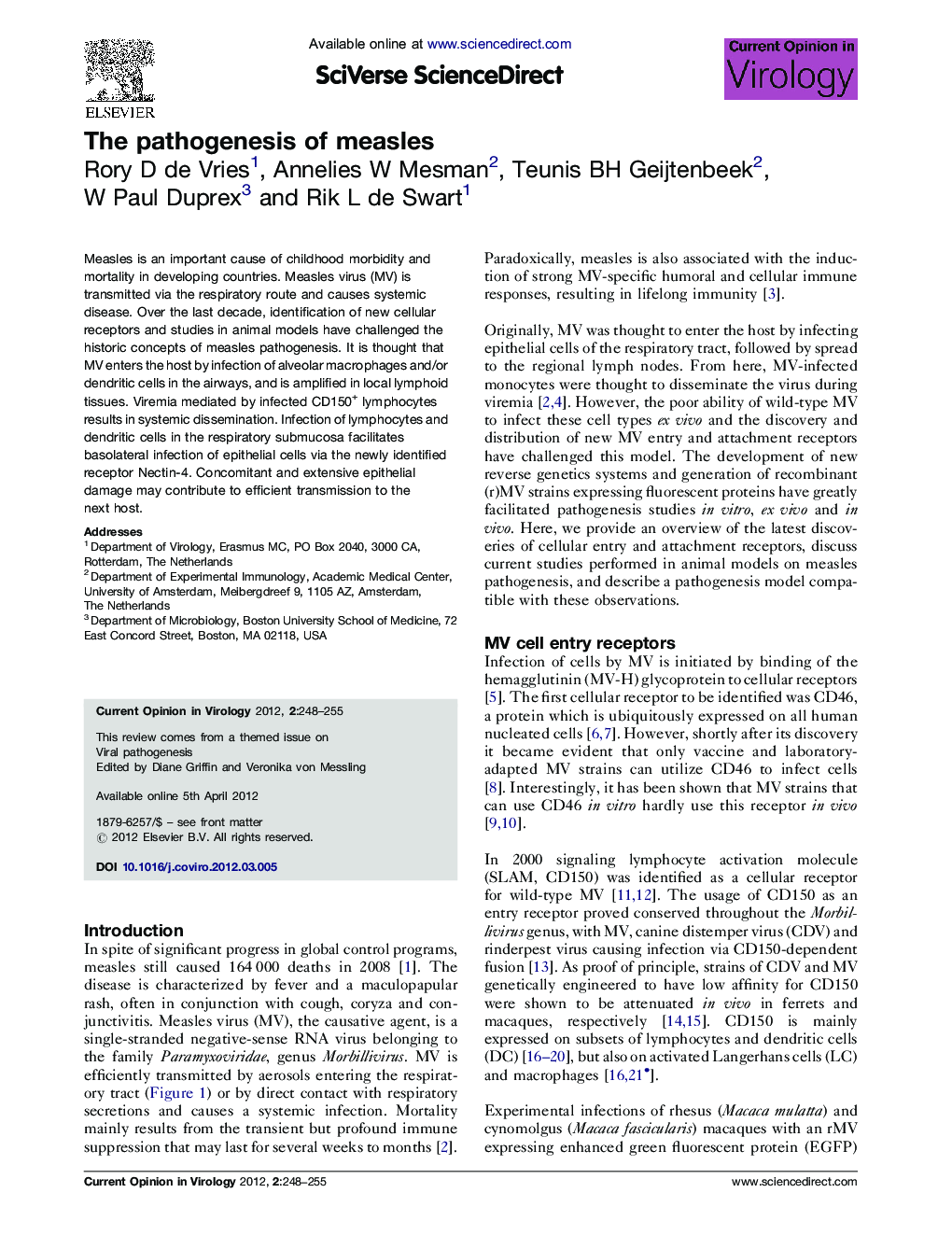| Article ID | Journal | Published Year | Pages | File Type |
|---|---|---|---|---|
| 5806959 | Current Opinion in Virology | 2012 | 8 Pages |
Measles is an important cause of childhood morbidity and mortality in developing countries. Measles virus (MV) is transmitted via the respiratory route and causes systemic disease. Over the last decade, identification of new cellular receptors and studies in animal models have challenged the historic concepts of measles pathogenesis. It is thought that MV enters the host by infection of alveolar macrophages and/or dendritic cells in the airways, and is amplified in local lymphoid tissues. Viremia mediated by infected CD150+ lymphocytes results in systemic dissemination. Infection of lymphocytes and dendritic cells in the respiratory submucosa facilitates basolateral infection of epithelial cells via the newly identified receptor Nectin-4. Concomitant and extensive epithelial damage may contribute to efficient transmission to the next host.
⺠Measles virus is spread via the respiratory route and causes systemic disease. ⺠MV entry is mediated by immune cells in the alveoli or the mucocilliary epithelium. ⺠The attachment receptor DC-SIGN plays an important role in initial MV infection. ⺠CD150 is the primary cellular entry receptor for initial MV infection in vivo. ⺠Nectin-4 is an additional cell entry receptor on the basolateral surface of epithelial cells.
